Why it is necessary to operate Haier robot cleaner with LG TV
Will my house be smart? Some would say yes, others would not. What is standard of smart house, smart home?
At the heart of smart homes are home appliances. Most home appliances only performed limited functions. The TV only emits video, and the air conditioner emits cool breezes. Refrigerators lower temperatures to increase food retention. The washing machine is responsible for washing, rinsing and dehydrating. Many home appliances still play their own role.
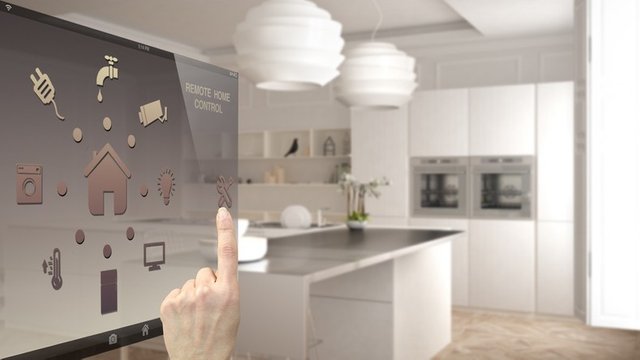
Smart appliances are a little different. First, we secured connectivity. If the remote control was to press the power button on the remote control, connected smart appliances can also be controlled by a smartphone. If you can communicate via Wi-Fi, you can turn the air conditioner on or off from the outside.
It's just that level. Smart home appliances have a wall of manufacturers, and connectivity beyond this wall is still unknown. For example, suppose you have a Samsung air conditioner and an LG washing machine. Robot cleaners use Xiaomi products. To control the air conditioner 'smart', you need to download an app called 'Smart Senses' with your smartphone. Samsung's home appliance control app. LG needs a ThinQ. To run the Xiaomi robot cleaner from the outside, you need to install the 'My Home' app. You need one app for each manufacturer.
It is not easy to create a smart home that encompasses Samsung air conditioners, LG washing machines, and Xiaomi robot vacuum cleaners, unless they are 'customized' with home appliances. Different manufacturers are the limitations of smart home appliances with walls and the limitations of smart homes.
OCF was born to break down the walls between manufacturers
There is an attempt to give all appliances the same 'connectivity' regardless of the manufacturer. The Open Connectivity Foundation (OCF). OCF was established in 2016 to derive an agreed-to-device communication system under the leadership of a global company. At the time of establishment, global companies including Samsung Electronics, Intel, Microsoft, Qualcomm, Cisco, and GE Digital participated.
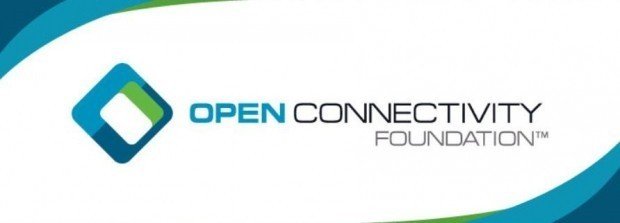
What they wanted was 'openness' and 'connectivity'. Of course, the spirit is still no different, but initially it was approached from the supplier's point of view. In the future, smart home appliances are connected to each other, and connectivity was 'closed' by manufacturer. Different manufacturers had to use different device frameworks. For example, A and B had to develop a separate framework for smart home appliances. To connect A washer and B refrigerator, A had to rebuild B's framework, and B had to redevelop or revise A's framework.
In this case, development cost is inevitable. Increased development time makes it difficult to get products to market on time. If you don't develop your own, you have to use an external framework. Apple, Amazon, Google, etc. are typical. It can be easily connected, but it has a disadvantage of increasing dependence on specific companies such as Apple, Amazon, and Google.
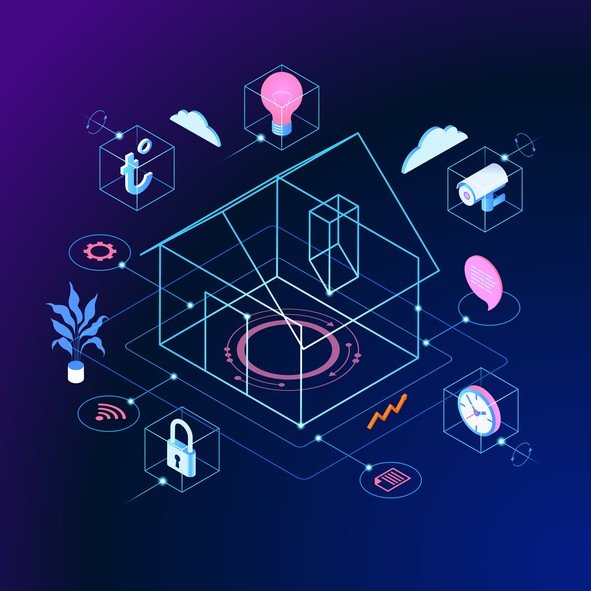
What if all the world's consumer electronics companies participated to create a common framework? All home appliance makers are participating, which will break down the 'wall' between manufacturers. Even consumer electronics of different manufacturers are built with the same framework, so they can easily interoperate without additional development costs. If A and B were initially difficult to communicate with each other in their own language, they could now easily communicate using the common language of C. OCF is to create and agree on a common language called C.
Diligent standards groups joined hands
OCF is not the first to advocate interoperability across devices regardless of manufacturer. There has been such a movement before, and a considerable number of organizations have been established in each area. Each group insisted on creating their own 'common language' and standards in their own way. The fight for leadership took place.
Each manufacturer's preferred method of building a framework would have been different. At least he wanted to create a common language in a way that was beneficial to his side, and the group struggled for interoperability. The best way to ensure interoperability between devices is theirs.
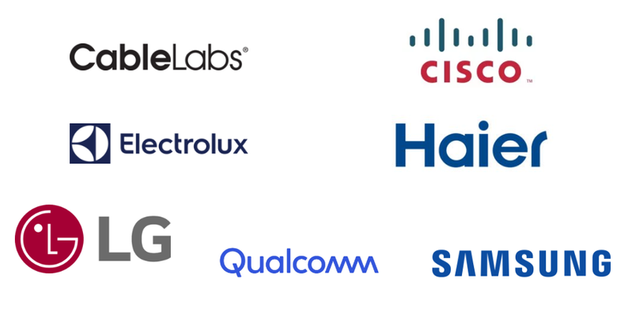
OCF Top Group Members
It is easy to guess the situation even if we look at two companies which are Korea's representative home appliances and rivals. Initially there was an organization called the Open Interconnect Consortium (OIC). It is also a standardization body. Samsung Electronics led the way. Which side was LG Electronics on? In fact, LG Electronics led another organization, the Allseen Alliance.
The problem is that these groups have fought each other hard to get what they want from each other. It's like a chicken game. We needed a strategy to 'win-win' each other. This consensus also formed for each of the group-led companies, and the integration began slowly.
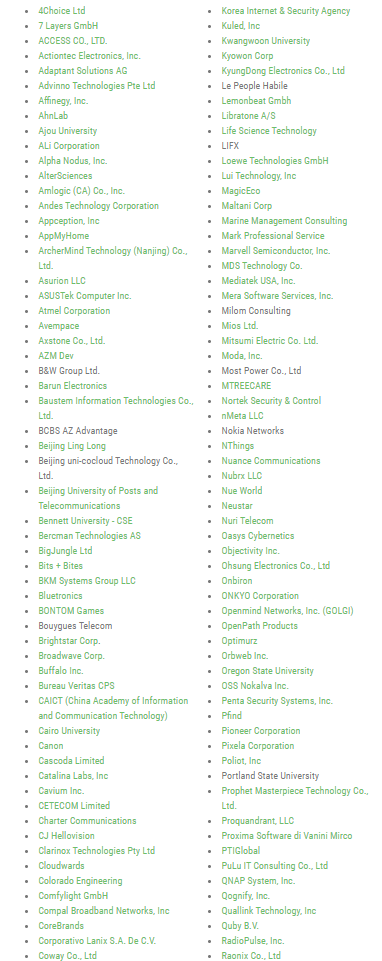
Some OCF regular members
OIC has integrated Universal Plug and Play (UPnP), the home network interface standardization standard for home appliances. It was at the end of 2015. It will also merge with the 2016 All Thin Alliance. In addition to the meeting between Samsung Electronics and LG Electronics, a number of global companies were staying in one fence to announce the beginning of full-scale integration. Now, we have established a cooperative system with Google-led thread group and oneM2M association of standardization organizations, and have grown into the world's largest organization for home appliance interoperability. Hundreds of companies participate in 27 countries.
How will we benefit?
Now is the time to ask the simplest and fundamental questions. What is good for us when we become OCF? The bottom line is that it's easier to get to the 'ultimate' smart home. You don't arrive right at the point of being a true smart home, but you'll be able to build a highway and run it on a winding and rough road.
For example: Home appliances are still connected. But this is more than just a connection. Only one smartphone and one app can command a manufacturer's device.
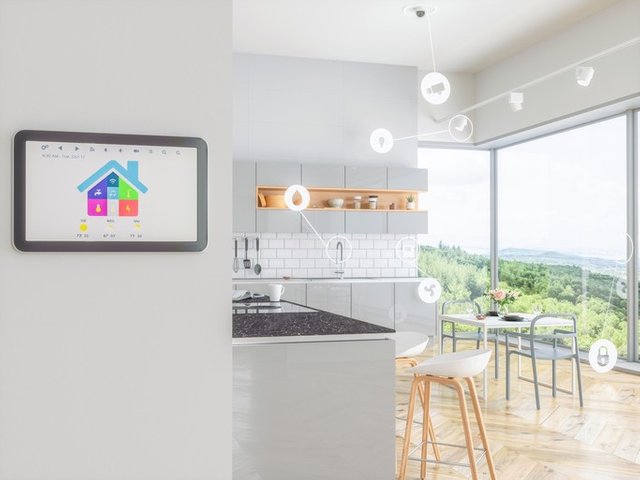
OCF can control different manufacturers' devices with a single control device – a unified app. If you're using an Apple iPhone, you can put an integrated app on it, and run the LG washing machine while turning on the Samsung air conditioner.
OCF may not have been on the road to implementing integrated control. OCF's 'flower' of connectivity is information sharing. Each smart appliance can collect a variety of data as it runs. The air conditioner can data the current temperature and what level the user wants. The refrigerator knows what internal temperature the user prefers, how many times they drink water with the water purifier installed in the refrigerator, and how much ice is used.
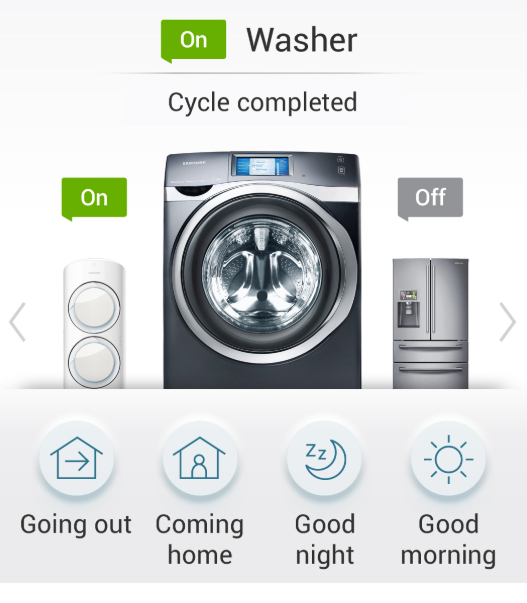
Each device can share all of this information through OCF. On a hot summer evening, the owner of the house enters the parking lot of the apartment and the COMMAX security system first notices. The data from the COMMAX security device rides through the LG U + network and comes to the Panasonic Smart Light and lights it up. Landlords don't like too bright light, so set it to 70%. At the same time, Samsung air conditioners operate at the room temperature the homeowner preferred. The LG washing machine that I reserved in the morning starts washing. This is a good time for homeowners to hang laundry after a meal. The CJ HelloVision set-top box turns on the evening news channel, and the Cuchen electric rice cooker begins to cook. The manufacturers mentioned are all OCF members.
Where is OCF
It will still take some time before this situation becomes a reality. Artificial intelligence (AI) and big data technologies must also be melted together. In extreme cases, the OCF orientation can be seen at a glance. OCF and its members are still working towards this direction.
If you choose the time when the OCF activities are in full swing, you can think of 2017. At this time, Samsung Electronics entered the 'IoTivity' certification process for the first time among OCF members. IOT is the name of the OCF framework. At the time, some home appliances, such as Samsung smart TVs and refrigerators, were certified by ITI.
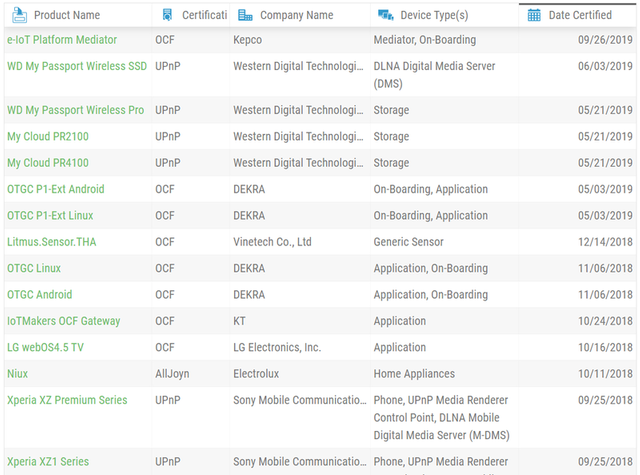
OCF Certified Product Confirmation Page
Since then, LG Electronics and overseas home appliance companies have also gone through the certification process. Home appliances that have obtained IOT certification have been pouring since last year. Some companies, including Samsung Electronics, have expressed their aspirations for all of their home appliances to be certified as IoT. Home appliances and devices that have been IOT certified can be found in the OCF Forum 'Certified category ( https://openconnectivity.org/certified-products/ ).
Interoperability experiments between other manufacturers' products have been in full swing since this year. At the first OCF Regional Forum Summit held in Qingdao, China in October, 31 Korean and Chinese manufacturers demonstrated their products. Domestic companies such as Samsung Electronics, LG Electronics, Commax, Entels, D & C, and Chinese companies such as Haier, Oppo and Sure Universal participated.
CES 2010, which will be held in Las Vegas in January next year, will expand the range of participating manufacturers and consumer electronics to promote interoperability tests. OCF plans to take the initiative in declaring the standard commercialization here.
OCF out of the house ... to cars, healthcare, factories
OCF started as an interoperable smart appliance. The end is not limited to the house. Currently, OCF is preparing to apply OCF to various fields such as automobile, healthcare, smart factory and security. Forums and councils are formed for each field to discuss their application.
In the automotive sector, the OCF Automotive project is in operation. The company plans to establish standards for open source projects and device manufacturing with car manufacturers. The goal is to be a part of the connected car ecosystem. Furthermore, the company plans to lay the foundation for connecting cars and homes and creating smart cities.

OCF is also active in healthcare, smart factories and security. Although not as active as consumer electronics, the company is looking to apply IoT to improve user health and factory productivity.
Numerous information technology (IT) companies speak. One day everything will come to a connected world. Connected World. Attention is drawn to the role of OCF in this world.